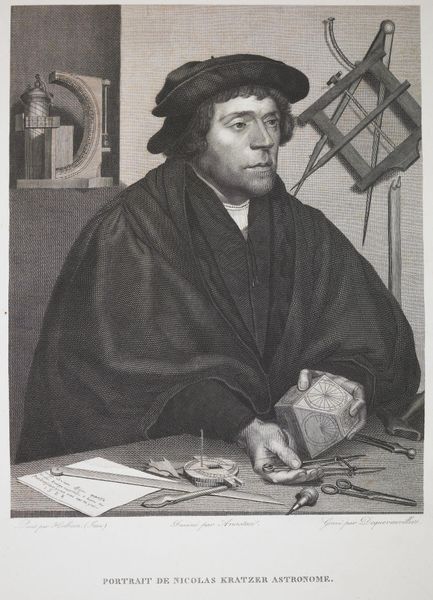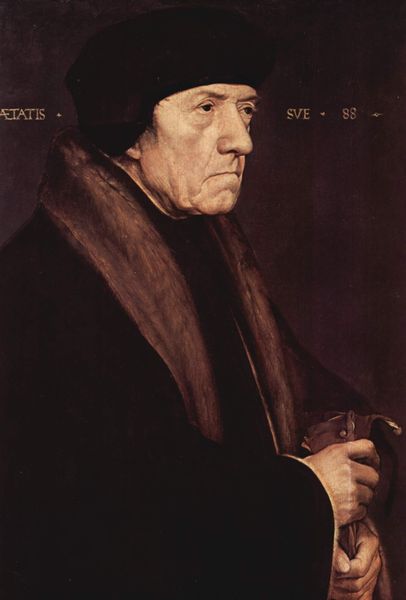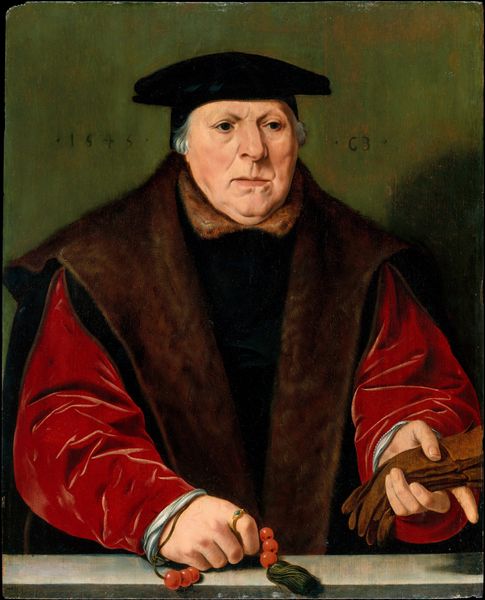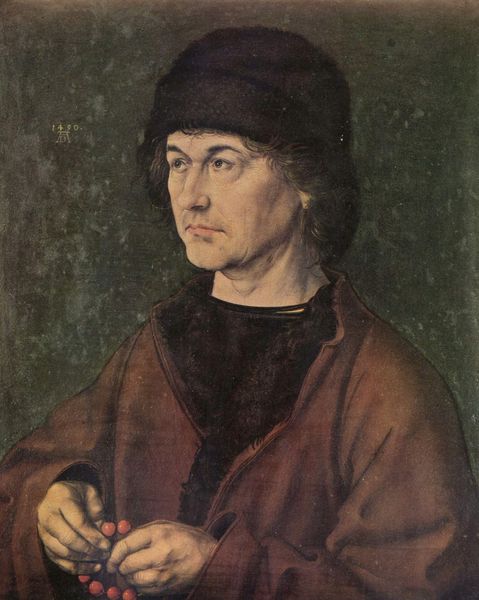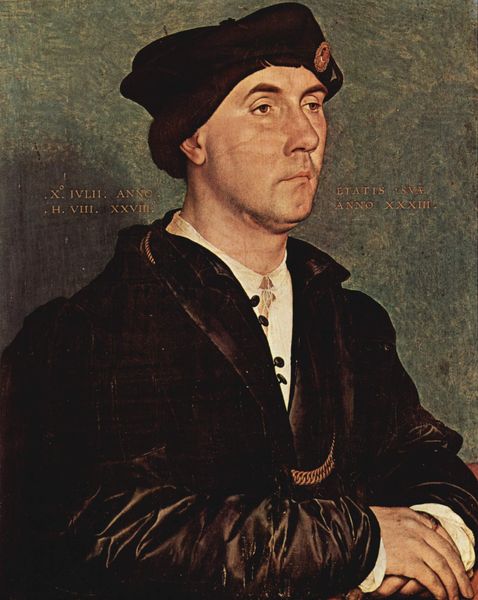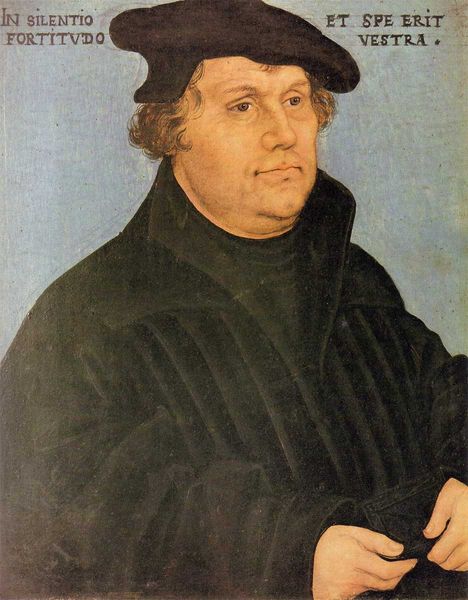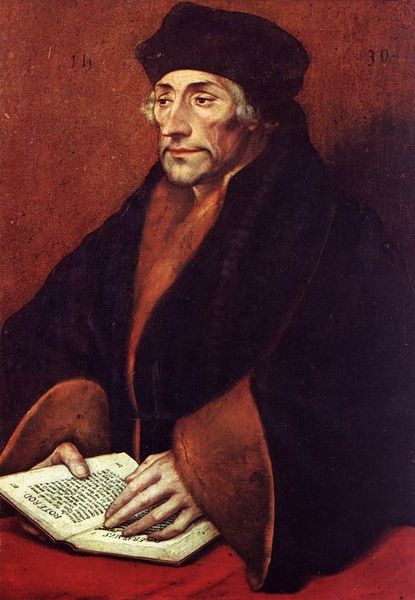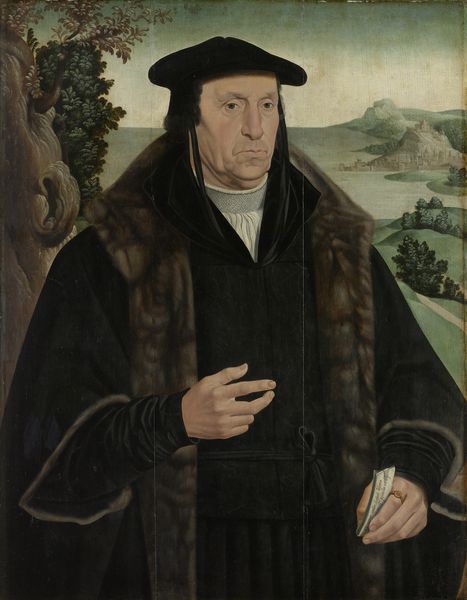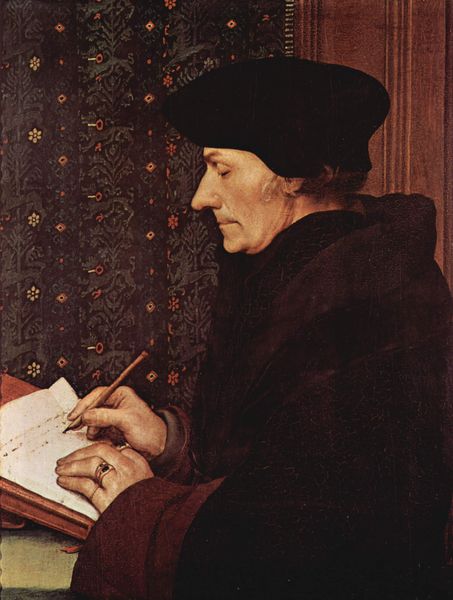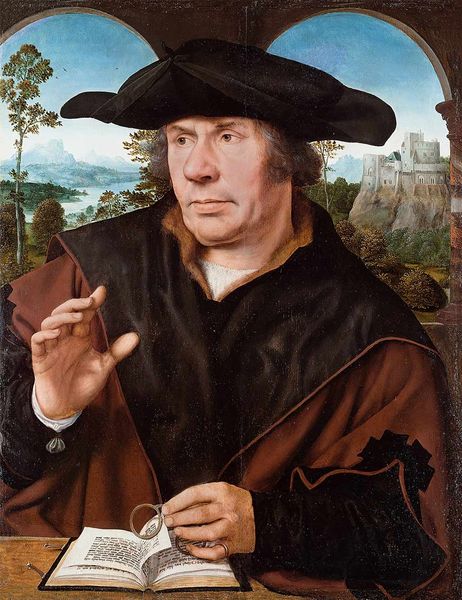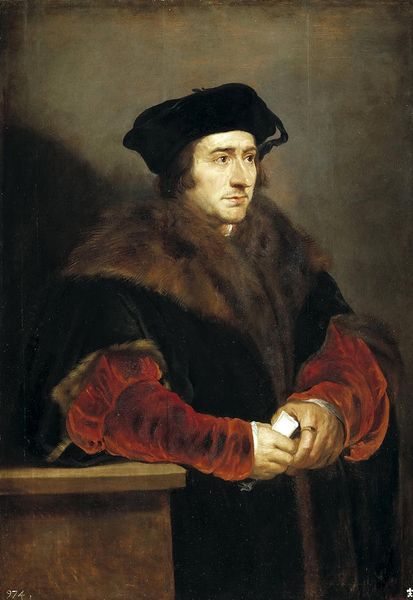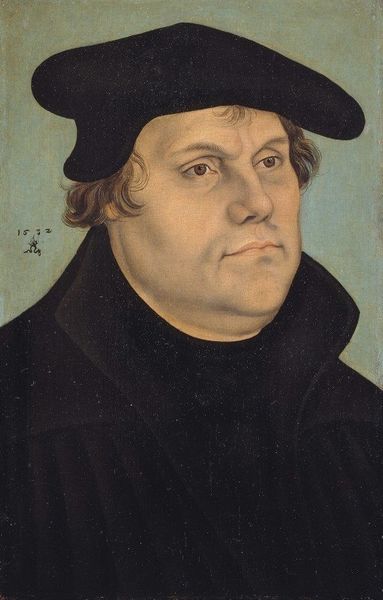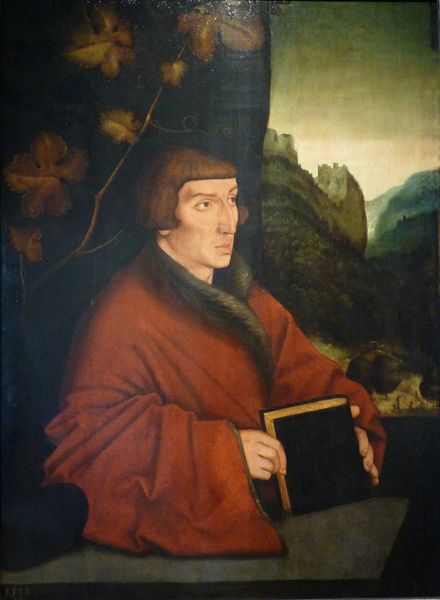
painting, oil-paint
#
portrait
#
painting
#
oil-paint
#
oil painting
#
history-painting
#
northern-renaissance
#
academic-art
#
realism
Dimensions: 67 x 83 cm
Copyright: Public domain
Curator: Here we have Hans Holbein the Younger's "Portrait of Nicholas Kratzer," an oil painting created in 1528. It currently resides in the Louvre. Editor: My goodness, what a curious array of objects! There's such precision in his gaze, yet it’s softened by…almost a melancholy. The objects scattered on the table and held in Kratzer's hands – they remind me of intricate dreams captured in wood and metal. Curator: Precisely! Nicholas Kratzer was an astronomer in the court of Henry VIII. Holbein, famed for his portraiture of the English elite, paints Kratzer amidst the tools of his trade. What we see here isn't just a likeness, but a statement about the sitter’s intellectual prowess and his contribution to the cultural capital of the court. The image situates him as part of a network of humanist scholars, a rising social class based on education. Editor: It's like a beautifully rendered still life with a human as its focal point. The planes and angles of his face, mirroring the tools laid out, and even that wonderfully peculiar polyhedral dial he holds—I wonder, was he also this still, this contained in life? Curator: Consider how portraits functioned then: Holbein crafts an image of power and learning. Kratzer's expression is carefully constructed, suggesting deep thought and command over complex knowledge. It’s a far cry from the more bombastic portraits of kings and nobles. It subtly advances the intellectual and scientific achievements prized in Renaissance courts, demonstrating power and influence through knowledge. Editor: The light in this work captivates. See how it caresses the cube, highlights the edges of instruments. The artist’s deliberate touch, isn’t it a quest to catch a moment of time itself? A portrait that transcends the merely representational. Curator: It’s as if Holbein uses paint to capture the ephemeral quality of scientific inquiry itself, transforming it into lasting cultural relevance, not just preserving Nicholas Kratzer but elevating the status of intellectuals in the Tudor court. Editor: Holbein did a lot with a few brushes. A somberness and an elegant capturing. Curator: Indeed. It's more than paint on wood; it's a statement.
Comments
No comments
Be the first to comment and join the conversation on the ultimate creative platform.
